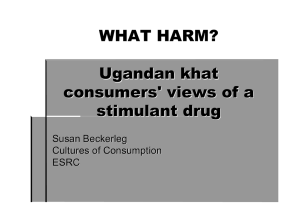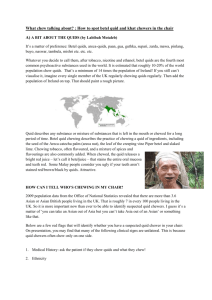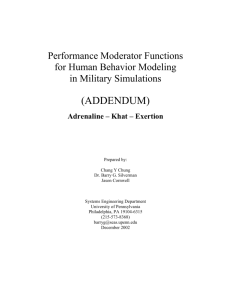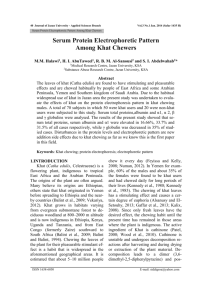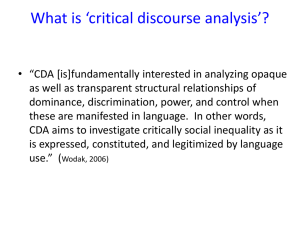"Khat causes families to break apart"
advertisement
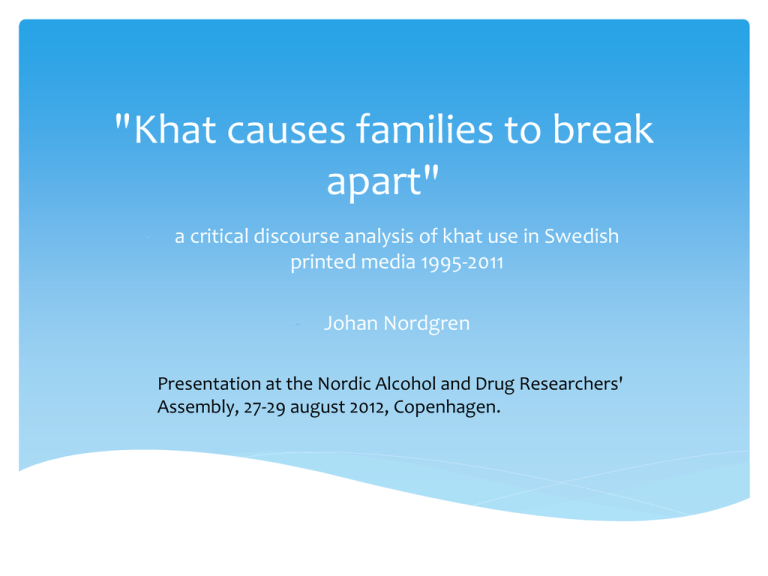
"Khat causes families to break apart" - a critical discourse analysis of khat use in Swedish printed media 1995-2011 - Johan Nordgren Presentation at the Nordic Alcohol and Drug Researchers' Assembly, 27-29 august 2012, Copenhagen. Overview Work in progress. Critical discourse analysis of how khat and khat use is represented in Swedish newspaper articles. Time range: 1995-2011. Khat use Khat classified as a narcotic: Finland 1981, Sweden 1989, Norway 1989, Denmark 1993. In Sweden mostly confined to persons of Somali decent. Mainly used in group settings – a psychoactive substance with a pronounced social dimension. Khat use NB - Ways of using is not uniform over time or location. Different cultures of consumption related to ethnic groups, age groups and cultural/national context (cf. Ahmed 2010; Gebissa 2010). Use is contested – normal cultural practice or highly detrimental and time-consuming ill? Empirical material Swedish daily newspaper articles about khat use. Published between 1995 and 2011. Critical discourse analysis (CDA) – developed by Norman Fairclough. Not a “pure” CDA analysis – influenced by certain key concepts and foremost the theoretical assumptions made. Customs seizures Three crashed cars and a seizure of 73 kilos of the classified plant khat. That is the result of a failed smuggling attempt on the Öresund bridge early on Sunday morning. The man trembled with his hand on the gear stick and looked as if he was going to bolt from the [customs] control. The customs officer grabbed the ignition key and inside the car over a quarter of a ton khat was found. Daily newspaper articles Khat as a “new” substance used in a new cultural context – in “the diaspora”. An arena where journalists tries to explain what khat and its use is and how it effects the Somali community. Khat and khat use as constructed through the media. Moral entrepreneurs Howard S. Becker - Outsiders: Studies in the Sociology of Deviance (1963). Groups or individuals mobilize to change rules, regulations or laws or develop, publish and legitimate specific images of a drug as specifically harmful. Experts Police officers Customs officers Narcotics experts Scientists Representatives from Somali culture societies (kulturföreningar). Often working together in joint projects against khat use. Common themes How khat affects the families of users. How khat is related to or causes unemployment and social exclusion. Arguments for more severe punishments. The discrepancy between the Swedish policy of criminalization and the acceptance in the UK and (formerly) the Netherlands. Focus on harm to the families Discourse is highly centered around harms from khat use – particularly the family as the main unit. Implicit and explicit that users all live within family units. Examples The addiction [to khat] often has social effects: families breaks apart and the household economy is ruined. Khat breaks families apart. [khat] breaks families apart both economically and socially. [khat use] leads to social misery, families split apart and economical ruination. Examples Most khat addicts in Sweden live in a family. A lot of the family’s money goes to drugs instead of food and clothing. The addict run into difficulties keeping a job and can become depressed. The inability to buy clothes for the children is used very often to symbolize the negative effects of khat use. Example Many khat users has given evidence that they, when the substance has left the body, becomes irritable, aggressive and irritated. But this did [name] not experience. He thinks that this can be very different from person to person. A deterministic pharmacological discourse Facts-boxes present clear and well-defined effects of khat on the user. Black-box thinking – the pharmacology of khat determines the effects that the user will feel. Extensive focus on negative physical and mental effects. Example [Khat] is centrally stimulating and similar to amphetamine. The intoxication is described as a harmonious euphoria. A concentrated euphoria that quickly turns into anxiety and irritation. Prolonged use can lead to depression and suicidal thoughts. The physical harms are among others loss of teeth, constipation, impotence and liver injuries. But just as khat initially gives an inviting mood it suddenly transforms into irritation and anger Khat as facilitating sexual abuse Khat increases the sexual drive, but can also lower [sexual] potency. These are properties that leads to marital problems: after chewing khat the husband might come home and molest the wife or in worst case rape her. Concluding remarks Khat discourse in Swedish newspaper articles is rather one-sided and also stable over time (high degree of intertextuality). Exclusive focus on negative effects – discussions of positive effects are virtually non-existent.
